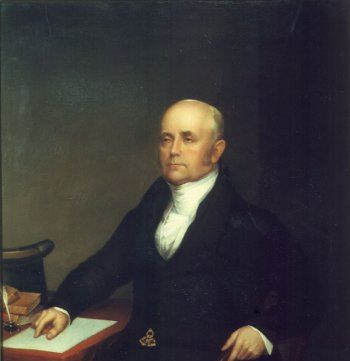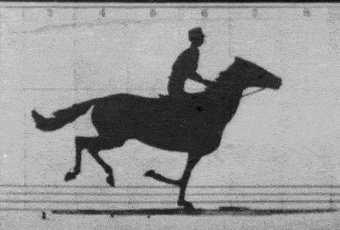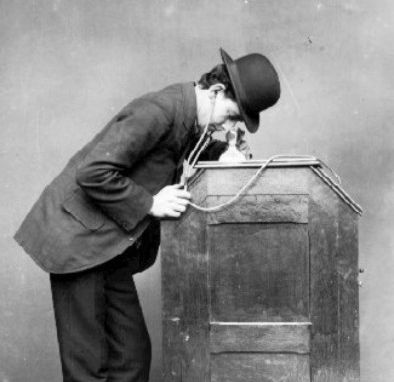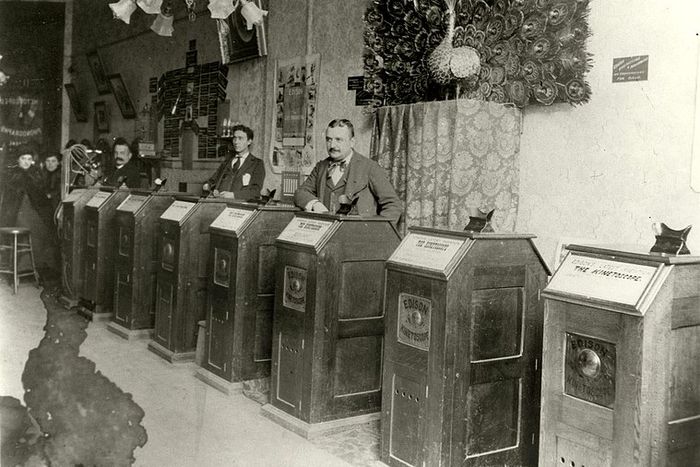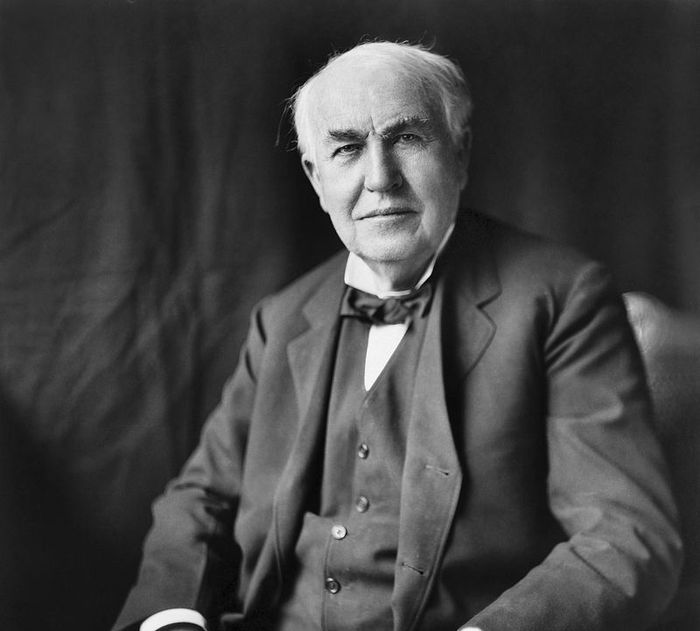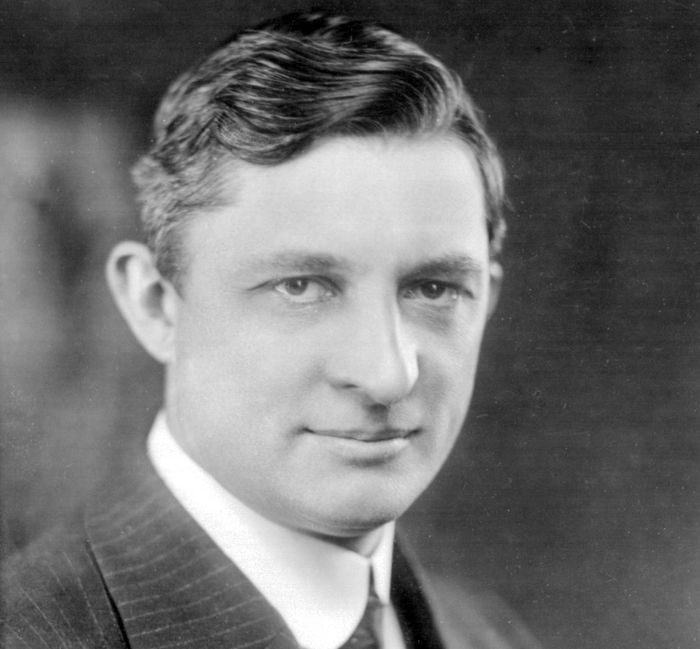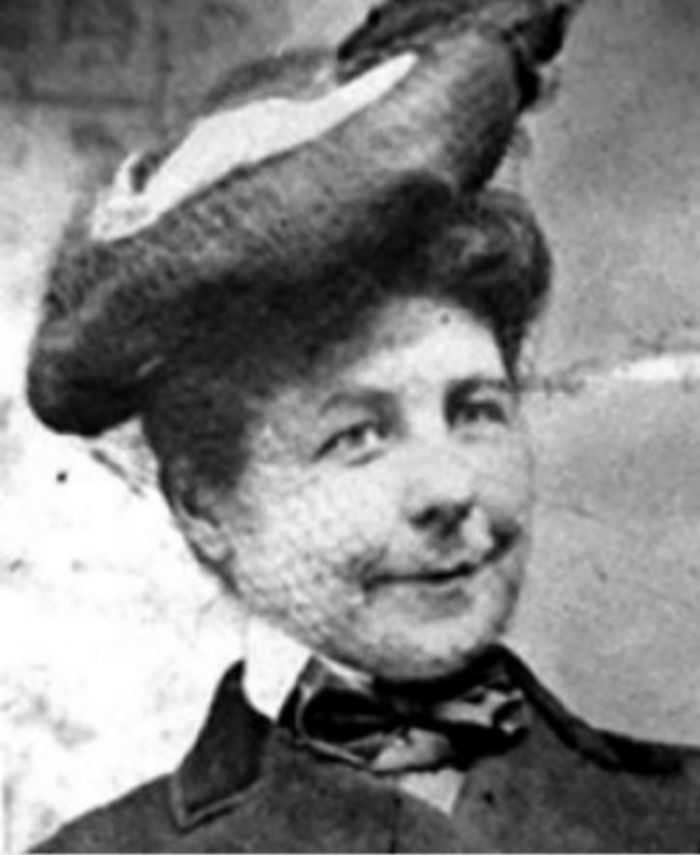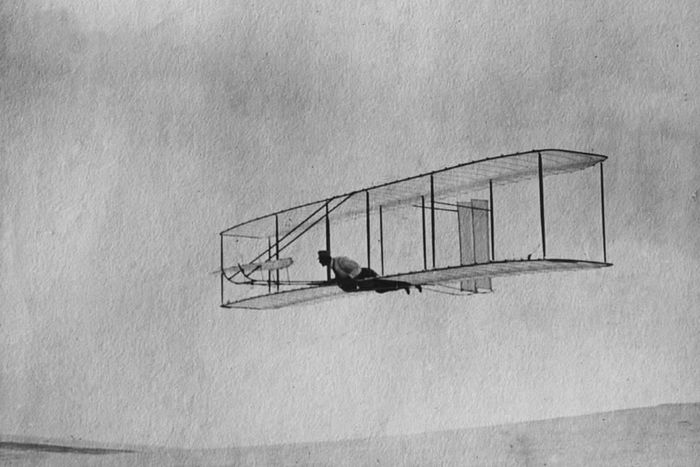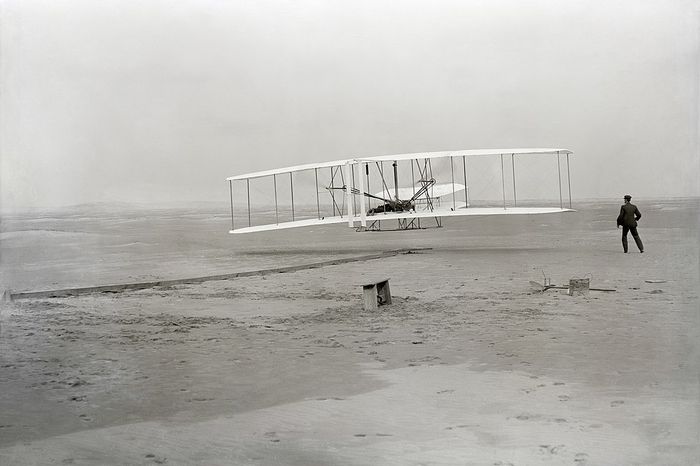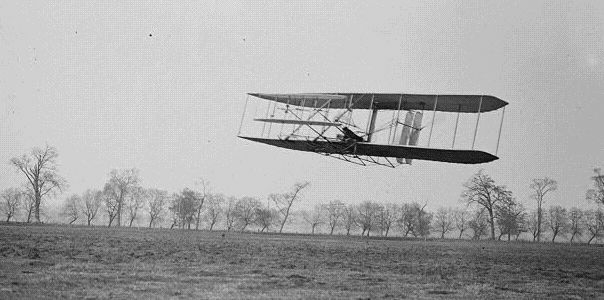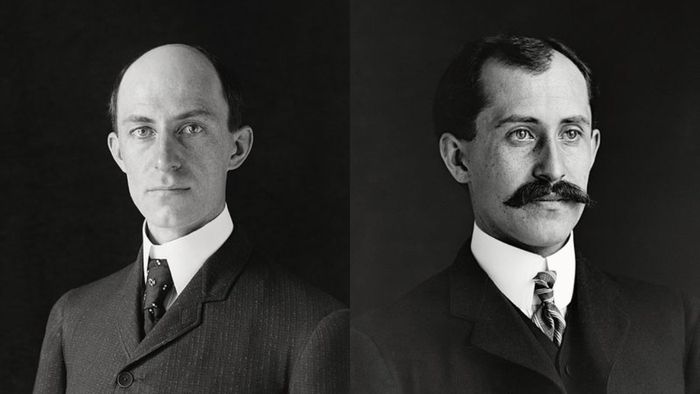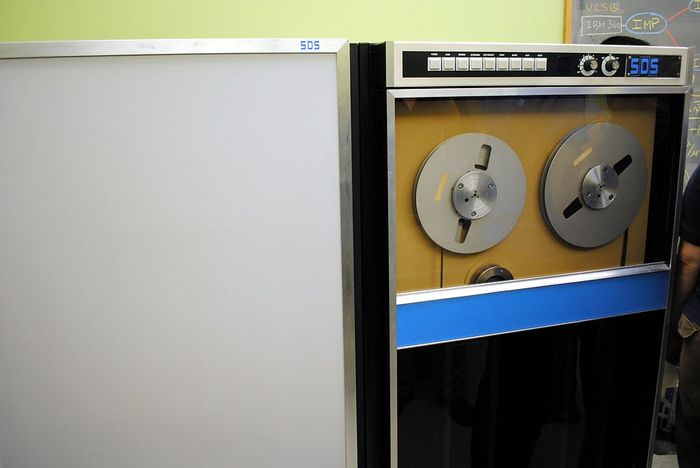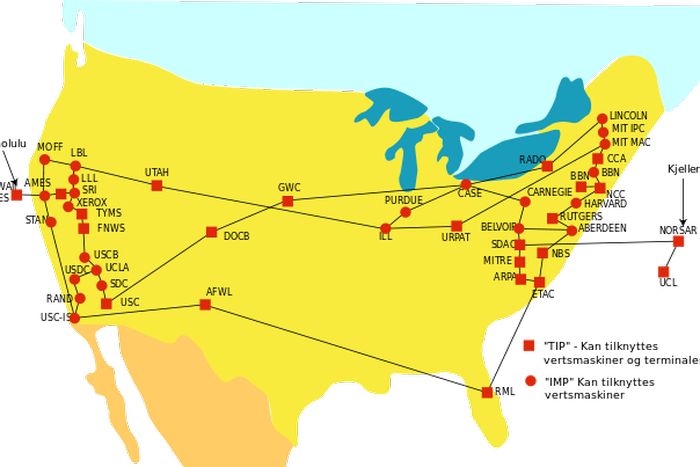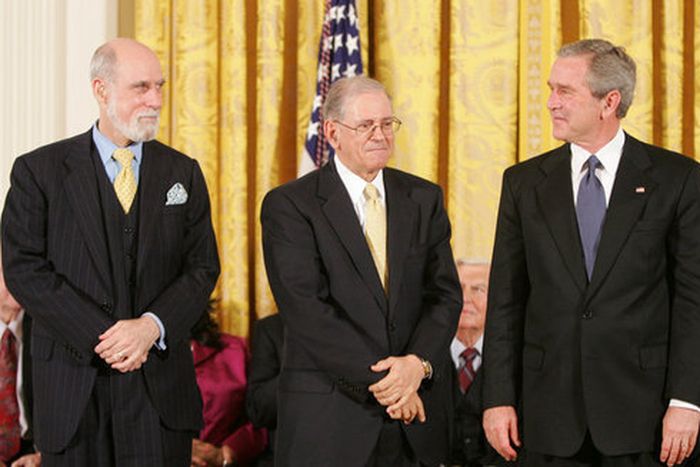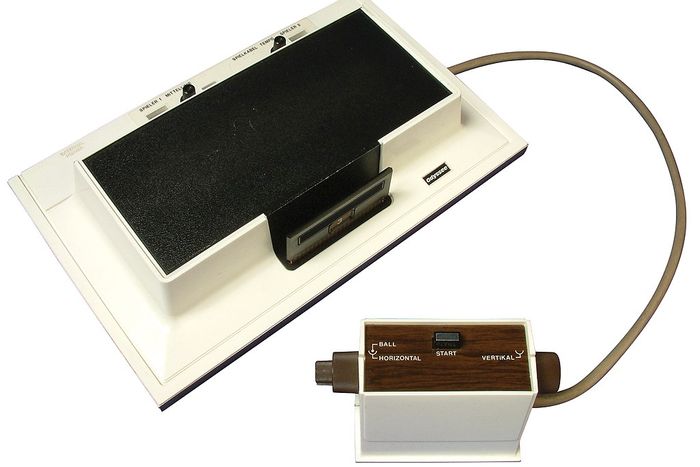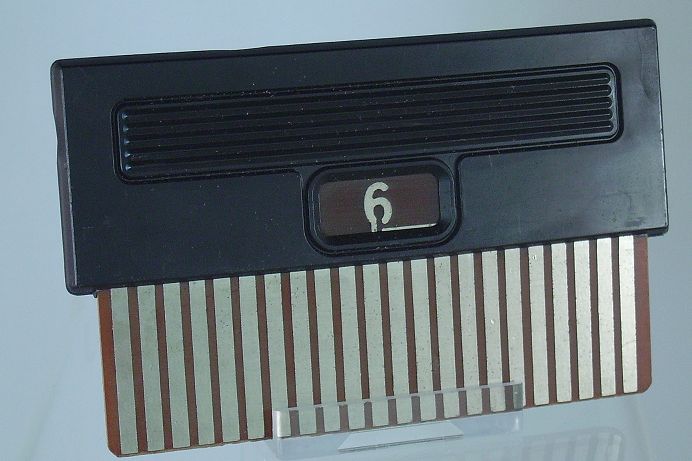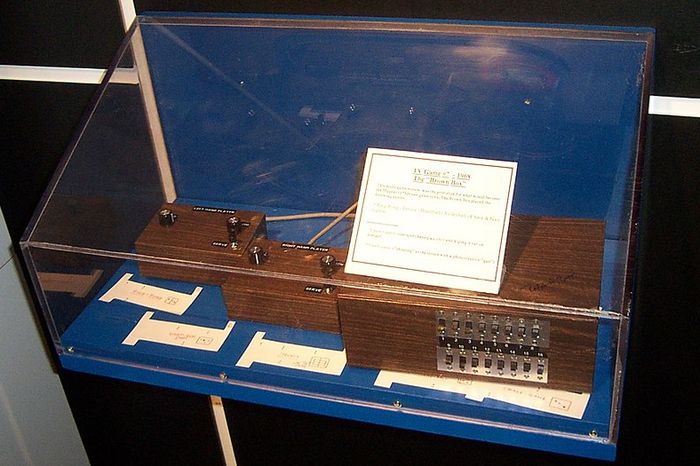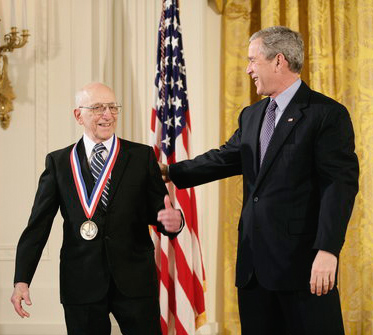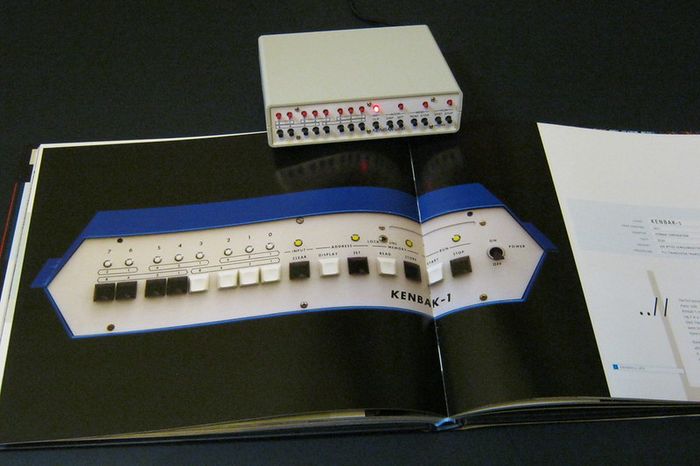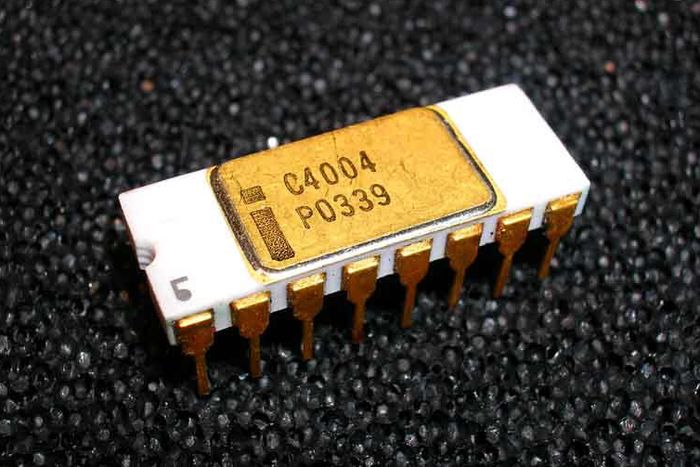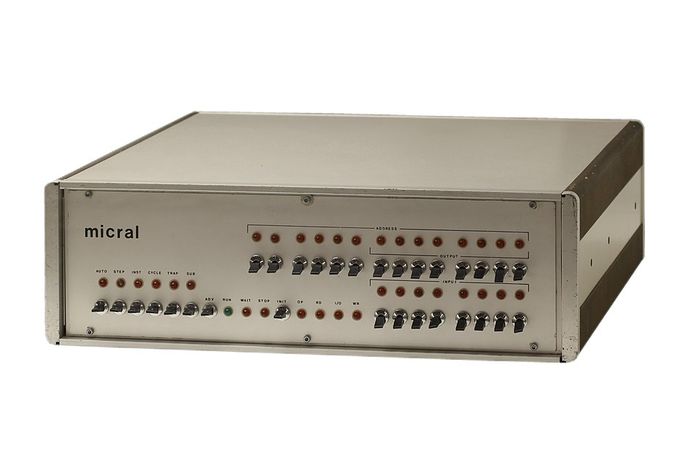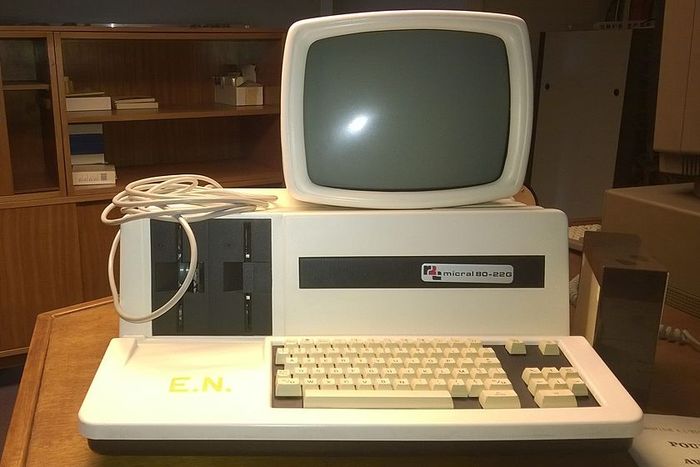Most of these US inventions you probably use every day and probably take them for granted. But once upon a time -not so long ago-, they did not exist. A genius inventor came up with the idea for each and then built them.
Here are 9 US inventions that have shaped our modern world.
Refrigerator
Like with many other modern inventions, it took a village to make the refrigerators we now know and love.
Until the 20th century, people used iceboxes to cool their food. Those were insulated devices with two drawers. One would put a big ice cube on the top drawer and food on the bottom drawer. That kept the food cold, but the ice cube had to be replaced every day.
In 1748, someone discovered an automated way to cool a container. It was famous Scottish physician and educator William Cullen.
He exhibited his device at the University of Glasgow. That was the first time a refrigerator worked. But the professor intended it as a chemical experiment. It showed how the evaporation of certain fluids could cool a container. Nobody thought which practical uses the cooling device could have.
Yet, if someone would argue that it was Scottish William Cullen who invented the refrigerator, they would have a point.
A few decades later, a prolific US inventor, Oliver Evans, designed another refrigerator. Evans wrote about it, but he never built the actual device. That would fall to an associate of his, US inventor Jacob Perkins. Now, Perkins is our man. He is who is more widely credited for the invention of refrigerators.
Jacob was living in the UK at the time. He took Oliver’s design, modified it, and patented it.
Then in 1835, he did what Oliver had failed to: he had John Hague built the actual machine in London. It was an insulated box that produced ice, was constantly cool, and cooled anything placed inside it.
It would take more inventors to tweak the device until it was commercialized in the 20th century, first for industrial and, then, for home use.
Movies
A new technology called photography was all the rage in the 19th century. And many enthusiasts had been experimenting with it.
In about 1878, English-American Eadweard Muybridge took pictures of a moving horse. The 12 pictures showed the horse frozen in different postures.
He then realized that if he saw these motion-pictures one after the other, fast enough, he could fool the eye. And the horse looked like it was moving.
So he came up with a device, the zoopraxiscope. It used disks to project these motion-pictures onto a wall. Yet, only one of his disks contained his animal photos. On the other discs, the figures were hand-painted, so it was more like animation.
With these experiments and inventions -along with others being made in Europe and the US- everything was now ripe for the birth of cinema.
And it was US inventor and visionary Thomas Edison who delivered the product in 1891.
Edison and his Scottish employee William Dickinson invented a machine called kinetoscope. It was partly inspired by Eadweard’s invention.
The kinetoscope was a box with a peephole. One spectator at a time would look through the hole and watch a ‘movie.’ That is, a cellulose filmstrip which had a sequence of pictures on it. It was shown at high speed against a blinking backlight. It created the illusion that the objects pictured were actually moving inside the box.
The movies were short at first but soon became lengthier. Thomas had some financial success with his invention.
Then, the Lumiere brothers, in France, saw the kinetoscope at a fair, tweaked the design, and set it free from its box.
They invented a projector. So the movie was not shown inside a box anymore but was projected unto a wall. With that, many people could watch the movie simultaneously.
Read next: These Elon Musk Companies Are Propelling You Into the Future
Air conditioning
Humans have dealt with summers and heat for thousands of years. So cooling devices have also existed for thousands of years. But most of them were fans, some of them, mechanic.
It was in the 20th century when things picked up the pace in the cooling department. As we have seen, in the century before many experimented with refrigeration. They had realized that by evaporating certain liquids, they could get the temperature to drop. The technology was applied to build refrigerators.
But there was a physician in Florida, John Gorrie, who attended Yellow Fever patients. And he used it to cool entire rooms.
Gorrie built a cooling device that made ice. With it, he hoped to cool the hospital room so his patients’ fever would go down. It was an interesting prototype that worked irregularly. But it was not properly an air-conditioner.
It was in 1902 that 25-year-old Willis Carrier invented the first real air conditioner.
The New Yorker worked for a publishing company. And he was trying to bring down the humidity in its press room. Humidity was not good for paper; it made it stick together. So Willis applied the refrigeration principles already known to invent a device that cooled the entire place and controlled humidity.
Soon, of course, they realized that air conditioning not only made paper happy but humans too.
So more than a decade later, Willis founded a company (Carrier) to sell his product. It still exists.
At first, only businesses and the rich could afford his invention, but nowadays, 80% of US homes have air conditioning.
Windshield/windscreen wipers
Mary Anderson, from Alabama, was not used to snow. So in 1903, when she traveled to New York, she was in for a surprise.
Mary was riding a streetcar when she noticed the driver had very poor visibility. The snow covered his windscreen. The man had to stop every few meters and open a side window to look at the road ahead. Even more, that opened window let in a chilly current of air that was unpleasant for the passengers.
And Mary noted that the other cars, in those early days of automobiles, were stopping on the side of the road. The drivers would get down and manually clean their windscreens.
Mary thought there had to be a better way to get rid of the snow. And within a few months, she had invented the windscreen wiper.
Her wipers were pretty much like the modern ones but were not automatic. There was a level inside the car which the driver could manually move to get the external rubber wipers to work.
She had her invention built and then patented in November 1903.
A few other inventors (from the US, Poland, Britain…) patented similar devices in those years. But Mary’s wipers were the only ones that actually worked.
Nowadays, cars are required by law to have windscreen wipers.
You may also like: Meet the 6 Richest Self-Made Women In the World
Airplane
Many had tried to build flying machines before. Even the 15th-century Italian inventor Leonardo da Vinci had designed a few.
And by the 19th century, other European inventors had succeeded in flying with gliders. Those are devices that have wings and make use of wind currents to stay up in the sky.
But no one had yet built a machine that could fly on its own, propelled by an engine. Enter the Wright brothers from Ohio.
The duo was aware of the experiments that had been done before them. They even knew about ‘wind tunnels,’ a contraption that allows experimenting with flying devices while being safely on the ground.
The brainy brothers, Wilbur and Orville, built their own updated wind tunnel. And also built a succession of gliders, which they fine-tuned after each attempt. They all flew successfully.
Now was the time to create a machine that could fly on its own. For that, the brothers needed to add an engine and propeller to their glider. And they were not the only ones trying to build the first airplane, either. They had plenty of competition in the US and Europe. But it was the Wrights who accomplished it first.
The Europeans were developing powerful engines that turned out to be too heavy to take off. While the Wrights cleverly decided to use the minimum horsepower needed to fly. That meant their engine was smaller and lighter.
Their airplane took off for the first time on December 17, 1903. It flew for 259 m (852 ft) through the skies of Kitty Hawk, North Carolina.
By 1905, their airplanes were flying 39.4 km (24.5 miles).
Human aviation had been born.
Microwave

Who invented the microwave oven is pretty straight-forward. The credit for this all-American invention goes to Percy Spencer.
Percy was a self-taught engineer from Maine. And in 1945, he was working for Raytheon, a space and defense manufacturer.
One day, he was working on a radar, which used microwaves. And he realized the chocolate he had in his pocket was heating up and melting. He asked around, and others said they had had similar experiences.
So the team started experimenting. They placed popcorn in front of the radar, it cooked. They placed an egg, it exploded.
Intrigued, the team directed the microwaves into a metal box. Inside it, they placed food, and it cooked rapidly.
Soon, Raytheon filed for a patent for a device that cooked foods with microwaves, a type of radiation. They began commercializing the ovens. And since the first ones were big and expensive, they sold them to restaurants.
A decade before, Westinghouse, the home appliance giant, had also successfully experimented with cooking food rapidly. But they had used radio waves -not microwaves- to do it, and their experiments had not come to much.
Nowadays, 90% of US households have microwave ovens. And all the frozen-food fans have Percy Spencer to thank.
Read also: 17 Facts You Didn’t Know About Inventor Elon Musk
Internet
The internet was born due to the collaboration of various countries. Scientists from the US, UK, Germany, and France exchanged ideas back and forth for years.
Yet, the first actual network which connected several computers was the ARPANET, funded by the US Department of Defense. Before Arpa, each computer lived in its own isolated world.
On October 29, 1969, two computers, each the size of a house, were connected to the ARPANET. And they were able to communicate with one another. One was at UCLA, the other at Stanford. Both universities are located in California. The UCLA computer sent the message ‘Login,’ but its Stanford counterpart crashed and only received ‘Lo.’ Nevertheless, that first attempt worked, and in the following years, the system evolved.
By the 1970s, several countries had their own mini-networks. France had the CYCLADES network, which connected all the major computing centers of their country. While Germany had the HMI-NET2. But the computers on one network could not communicate with the computers on another.
American scientists Vinton Cerf and Robert Kahn came to the rescue. In the late 1970s, they developed a protocol that allowed all computers of the world to connect to one another (the TCP/IP protocol, to get technical). And with that, the internet was properly born.
Don’t miss: Who Invented Your Favorite Apps and Websites, Like YouTube and Instagram?
Home video games
Gamers can thank Ralph H. Baer, a German-born US engineer, for this invention.
Ralph’s family fled Germany during WWII and landed in the US. By 1966, the engineer was working at Sanders Associates, a defense industry company.
Televisions were becoming more affordable. And Ralph thought they could be used for more than just watching programs like, for example, to play games.
So Ralph drafted a proposal and sent it to his superiors at Sanders. They allowed him to create the game console and gave him $2,500 for his pet project.
At Sanders, Ralph was in charge of a department that had 500 engineers. So he asked two of them, Bill Rusch and Bill Harrison, to help with the project.
Eventually, the trio came up with a video game console nicknamed the Brown Box. The console had switches. The gamer could toggle them to play different sports -hockey, tennis, ski, volleyball, soccer, handball, ping-pong…-, or to solve quizzes or mazes.
Sanders Associates was in the military business and did not know how to commercialize the Brown Box. So they licensed it to Magnavox in 1971.
Magnavox simplified the design, renamed the product Odyssey, and started selling it. It came with 13 games, and more could be purchased separately. It also came with a gun to shoot objects on the TV screen.
Magnavox sold 130,000 units in the first year. And as they say, the rest is history.
Personal computer
The first computes were huge, weighed tons, and cost hundreds of thousands of dollars. Furthermore, they required a group of engineers to make them work. So only organizations and universities could afford them. Their pro was, of course, that in seconds, they could make calculations that took humans hours to solve.
By the 1970s, several people were trying to make smaller computers that could be used at home by the public at large.
US inventor John Blankenbaker was one of them. By 1971, he had built the Kenbak-1. It looked like a switchboard, had a small memory, and it did not have a screen or a keyboard. It did come with a booklet of detailed instructions on how it worked, though. But it was far from a commercial success, only 50 units were sold.
Nevertheless, it was the first personal computer (PC) ever made, according to the Computer History Museum and other scholars.
Then, there was a breakthrough: someone invented the microprocessor. This tiny thing could perform the same processes that huge computers did.
So by 1973, French engineers had created the first microprocessor-based personal computer. They called it Micral N. It looked like the Kenbak, for it, too, had switches. But it came with some nifty improvements, like having a lot more processing capabilities.
A few months after its debut, Micral got a floppy disk reader, and in 1974, it got a screen and keyboard.
So the US made the first personal computer, while France created the first microprocessor-based one. The latter is more akin to our modern PCs.
More Articles

